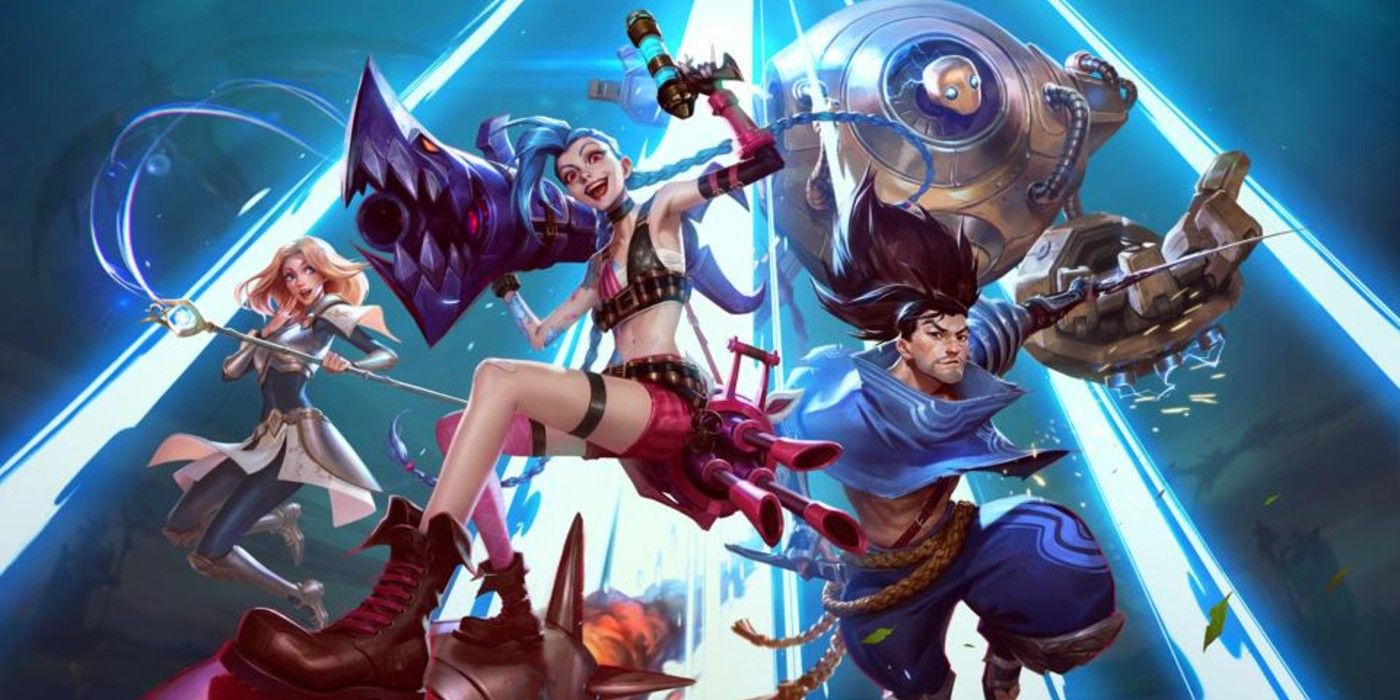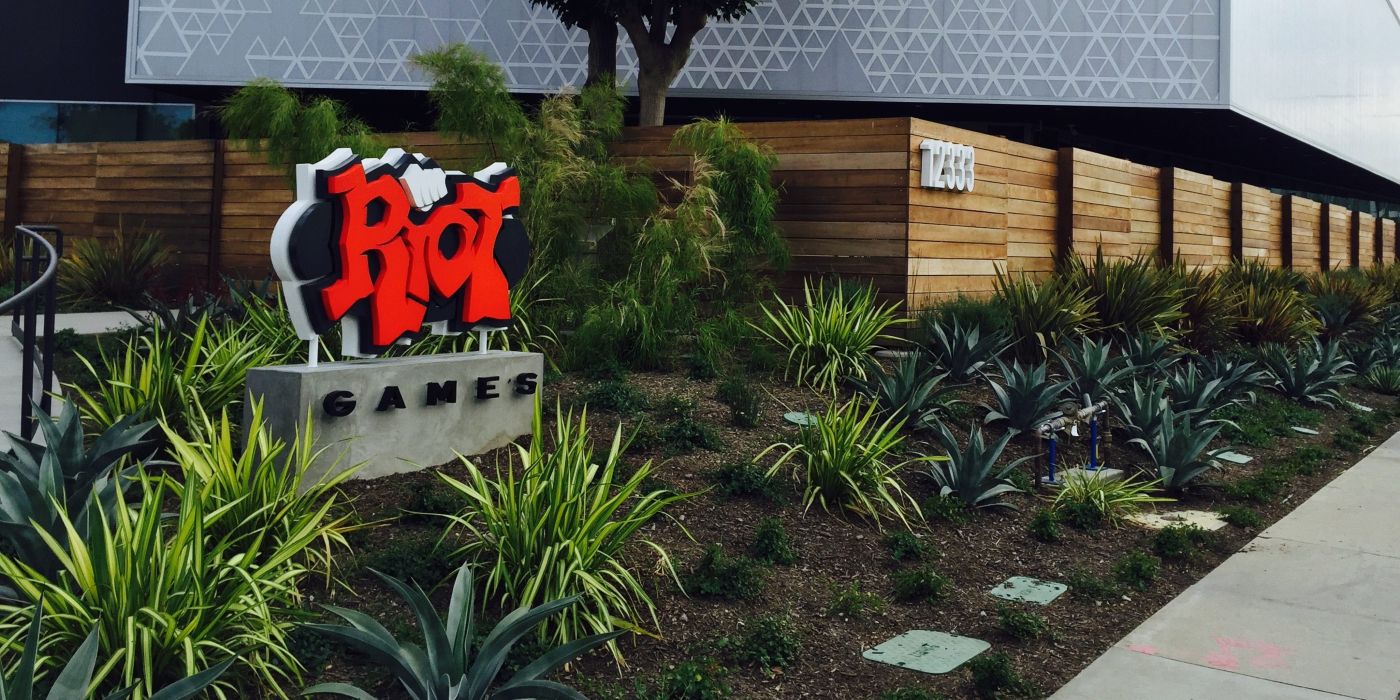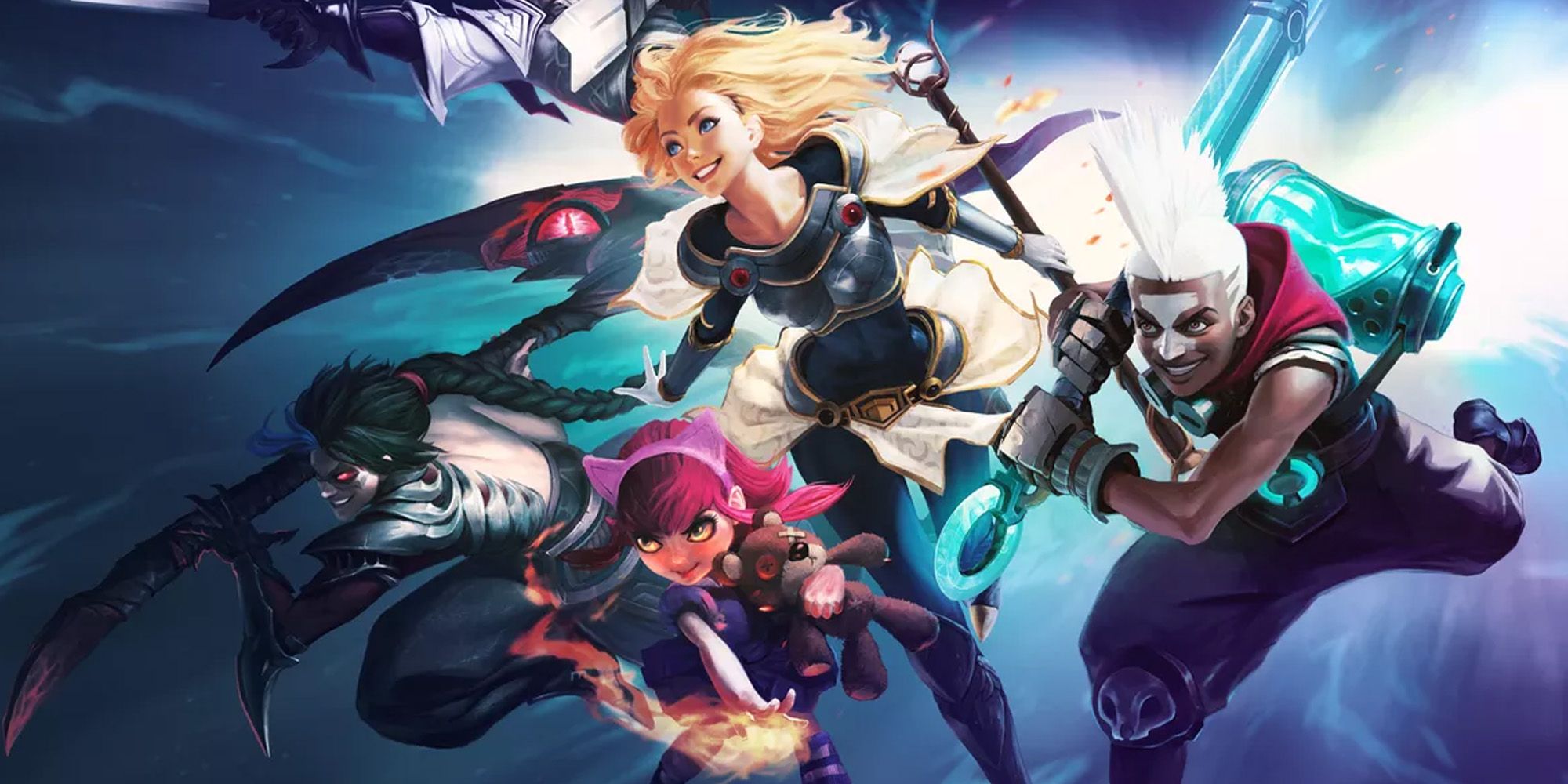Even almost 12 years after its release, League of Legends has remained one of the most popular games on the live streaming platform Twitch. Despite viral sensations, like the unexpected rise of the indie games Among Us and Rust, LoL always returns to the top of the site's All Categories leaderboard. What exactly has made the title so resilient even with all of the serious competition?
LoL is by and large the most popular multiplayer online battle arena, or MOBA. While its competitors, like DOTA 2, also boast millions in tournament prizes and an enormous player base, LoL still manages to dominate in overall popularity. That's because its developer, Riot Games, was one of the first companies to refine the MOBA genre and implement the same business strategies that made battle royales like Fortnite popular from the get-go.
Riot reported that 115 million gamers were playing LoL every month by the end of 2020, and those astronomical numbers are all thanks to the fact that the title has been free-to-play since its inception. Riot has fervently and consistently improved the game, and it has been around long enough that celebrity streamers have emerged from League of Legends. All three of these factors have given the MOBA such dedicated fans that no matter what the latest trend is, they'll always return to play or watch a game of LoL.
How League of Legends Became So Popular?
LoL's Twitch success story begins before it even launched, back when Riot co-founders Marc Merill and Brandon Beck were deciding if they should make it free. Before the title's 2009 release, the free-to-play game model was in its infancy, and Riot was nervous about giving away a product it had poured millions into for no up-front cost. Merill confessed his anxiety about the decision to make LoL free-to-play to The Washington Post in 2019. He admitted that LoL would have never been as big as it was today if they had not gone through with that difficult decision.
Nobody would have tried Legends if we put a price point in front of it because the game is tough to sell. It’s like, once you start to play it, once you kind of get over the hump — and that hump is big, like 10 or 20 games sometimes — that’s when you start to appreciate why anybody would think it's cool.
Deciding whether or not to spend $60 on a game can be a difficult choice, and it often leads to gamers passing on a purchase because a title didn't immediately wow them. LoL bypassed that decision entirely and let players fall in love with the title before they decided to spend money on cosmetics and other in-game items. This strategy also didn't include any "pay-to-win" mechanisms, which give players who choose to pay an in-game advantage. The move proved to be a stroke of genius and was replicated by subsequent titles, like Fortnite and countless mobile games.
At the time, LoL was the easiest-to-play MOBA on the market. All of its predecessors were mods of strategy games, like Warcraft III: Reign of Chaos, which required players to spend $60 and install custom software. LoL's simplicity brought in droves of gamers, who then recommended it to their friends and family. It spread like wildfire, and since they were first to market, its diehards never left. Its biggest competitor, DOTA 2, was released by Valve Corporation in 2013, which gave LoL years to develop a deep-rooted fanbase.
How League of Legends Became Popular On Twitch
Twitch began operating in 2012, and by then, LoL already had 27 million users, according to The Wall Street Journal. One of those many fans was Tyler "Loltyler1" Steinkamp, who began his live-streaming career in 2013 and has since become the most famous LoL Twitch personality, known for his outrageous and occasionally toxic reactions to his games. Steinkamp has amassed more than 4 million Twitch followers as of February 2021, but the game's massive esports presence is also responsible for its unyielding popularity.
Riot also began focusing on developing its LoL esports league in 2012, with the establishment of the League of Legends Championship Series (LCS). The LCS hosts tournaments with millions in prizes up for grabs, which fans from around the world tune in to watch on Twitch and YouTube. Its viewership rivaled that of the NFL back in 2014, according to internet archive WayBackMachine, and that viewership has only continued to skyrocket.
The Twitch tracking site SullyGnome reported that the LCS Twitch channel has racked up more than five million hours watched over the course of fewer than 50 hours of live coverage. That means millions of viewers tuned in to watch the esports in the esports league over the course of a few weekends. This level of fandom has secured the LCS massive sponsorship deals with companies like Coca-Cola and American Express, and it's also responsible for creating Twitch celebrities of its own.
It's no secret that the LCS is one of the world's largest esports organizations, and its competitors are just as famous as pro athletes that play traditional sports. This pro scene developed personalities, like Sang-hyeok "Faker" Lee, who also stream on Twitch to showcase their world-class talent to a virtual auditorium of fans. Faker hosted his first stream ever in 2017, and it peaked at almost 250,000 concurrent viewers. He has since amassed 3.2 million followers on the streaming platform and attracts hundreds of thousands of views for each of his broadcasts.
League of Legends has gone far beyond a viral trend. It was conceived as an idea of making a popular game mod more accessible and has evolved into a multinational sporting organization with fans from all over the world. Its primary viewership remains on Twitch, where most of its premier content creators reside. However, it has become just as popular as traditional sports, and millions of people will tune in to watch it on Twitch, as they do for the NBA on ESPN.
Sources: LeagueFeed.net, The Washington Post, The Wall Street Journal, WayBackMachine, SullyGnome



